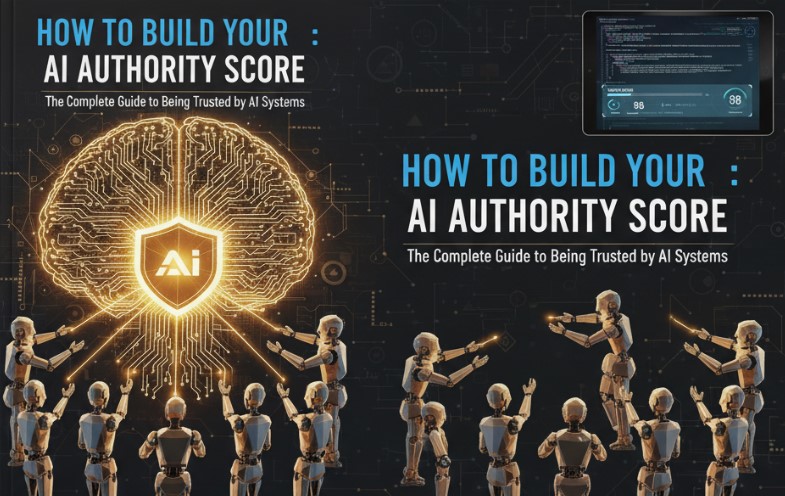Published by NewsPR Today | June 2025
Let’s go back to the early days of the internet. It wasn’t that difficult to get your website to appear on Google. You only really needed a few technical gimmicks to beat the search engines, a collection of backlinks, even if they were from dubious online directories, and the appropriate keywords. It reminded me a lot of the Wild West. The few rules that did exist were surprisingly flexible and easy to violate.
But that era is long gone. Today, if you were to try those same old tactics, your site could be wiped from search results in the blink of an eye. This is because Google’s core algorithm has become incredibly sophisticated, fiercely focused on quality, and increasingly built around the experience of the user. These constant, rolling changes have not just upended the work of SEO professionals. They have fundamentally altered how we write, how businesses build their online presence, and even how everyday readers are able to discover information they can trust.
At NewsPR Today, we have been watching these developments from a front-row seat. Every single update feels like another reminder that the internet is a living, breathing thing, one that is constantly growing, evolving, and refining itself to better serve what people actually want. And if you are putting content online, whether you are a major media outlet, a solo blogger, or a business, understanding this evolution is no longer just a good idea. It is essential for survival.
The Early Years: When Tricks Could Outweigh Quality
Back in the 2000s, most search engine strategies revolved around finding and exploiting any available loophole. You could pack a webpage with an absurd number of repeated keywords, hide text from users by matching it to the background color, or participate in massive networks to exchange backlinks with other sites. These tactics were not just common; they were standard procedure, and frankly, they worked for a while.
Then came the first real earthquake. Google’s Florida update in 2003 was a monumental turning point. Overnight, countless websites built on a foundation of keyword stuffing and manipulative practices saw their rankings completely collapse. For many businesses, it felt like the ground had vanished beneath them. But in retrospect, it was Google drawing a very clear line in the sand. It was no longer just a game of keywords. Concepts like relevance and authenticity were starting to matter.
Panda and the War on Low-Quality Content
Fast forward a few years, and a new kind of problem began to pollute search results. Enormous content farms started to take over. These were essentially digital factories, producing huge volumes of shallow, repetitive articles engineered for one purpose: to game the algorithm. They were not writing for human beings; they were writing for robots.
Then, in 2011, Google released the Panda update. Suddenly, thin content and low-quality writing were not just ineffective; they were a liability that could get you penalized. Traffic to many prominent sites fell off a cliff, and some online businesses never recovered from the shock. But something incredibly positive happened too. Content of a higher quality began to rise to the surface. Pages that offered genuine value, like thoughtful explanations, helpful tutorials, and trustworthy advice, started receiving the visibility they deserved.
Penguin Shifts the Focus to Real Authority
The Penguin update in 2012 came after another long-time SEO shortcut: the manipulation of backlinks. Before Penguin, you could buy hundreds or thousands of backlinks from sketchy websites and watch your own site climb up the search rankings. But Google brought the hammer down. Now, only backlinks that originated from reputable, relevant, and authoritative sources would count in your favor.
This change forced marketers and website owners to completely change their strategy. Instead of relying on quick, artificial fixes, they now had to earn their links the hard way, through creating valuable content, building meaningful collaborations, and getting genuine recommendations.
Smarter Search Through Hummingbird and BERT
Google was far from finished. In 2013, it launched the Hummingbird update. This update was not about punishing bad behavior; it was about making Google’s brain better at understanding what people were asking. Suddenly, Google began to interpret the intent behind your search, not just the exact words you typed. A couple of years later, with the introduction of BERT, it took this even further by using natural language processing to understand the full context of long and complex questions.
What did this mean for content creators? It meant that writing naturally, in a way that people speak and think, started to decisively outperform robotic, keyword-obsessed copy. It rewarded writers who took the time to answer real questions and to structure their content around genuine human curiosity.
The Rise of Mobile and User Experience as Ranking Factors
As smartphone usage exploded across the globe, Google adapted once again. In 2015, it officially started giving preference to websites that were mobile-friendly. A few years after that, it introduced the Core Web Vitals, a set of metrics designed specifically to evaluate how fast, stable, and responsive a website feels to a person using it.
At this stage, it was no longer just about what was on your page; it was about how that page felt to navigate. Was it cluttered and confusing? Did it load at a snail’s pace? Did the layout jump around when someone tried to scroll? Sites that delivered a poor experience began to fall in the rankings, even if their content was otherwise strong.
E-E-A-T and the Age of Authenticity
Most recently, Google introduced the concept of E-E-A-T, which stands for experience, expertise, authoritativeness, and trust. This is where the algorithm gets even more human. It does not just look at what you are writing about; it looks at who you are, why you are writing it, and how trustworthy your voice and perspective seem to be.
Pages that come from real experts, show firsthand personal experience, and cite credible sources are the ones that tend to do better. This has massive implications for anyone creating content. It encourages transparency, rewards depth, and places a premium on a real-world perspective. You simply cannot fake credibility anymore, at least not for long.
What It Means for Creators and Publishers
So, where does this whole journey leave us? If you are creating content today, whether you are a news publisher, a small business owner, or an independent writer, the lesson is clear: shortcuts do not lead to lasting success. The algorithms may change, but Google’s fundamental goal remains consistent: to show the best possible answers to people’s questions.
If your content helps people, if it is clear, honest, and built on a foundation of real knowledge or experience, then you are already aligned with where Google is going. And while no one can predict exactly what the next big update will bring, you can future-proof your work by keeping your focus locked on quality, clarity, and trust.
Final Thoughts from the NewsPR Today Team
Here at NewsPR Today, we have lived through every single one of these major updates, and yes, sometimes we have had to make difficult adjustments. But through it all, we have learnt to see each shift not as a setback, but as a fresh opportunity to get better. It is a chance to write more clearly, to zero in on what our readers truly need, and to keep building a publication that earns the public’s trust with every story we share.
The web is always changing. Google will continue to refine how it evaluates and ranks content. But if your work is grounded in truth, helpfulness, and a real desire to inform or guide others, you are already on the right side of that change.




